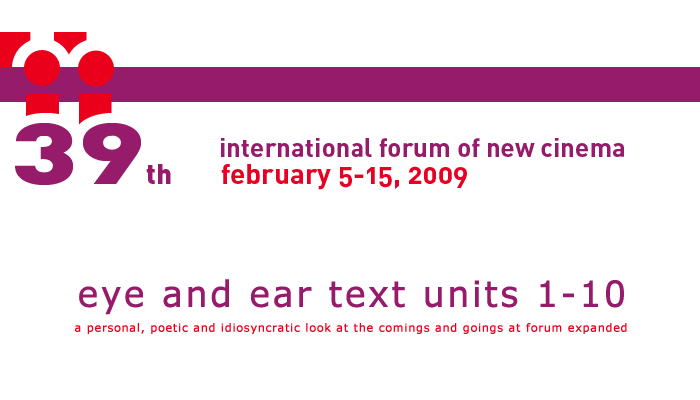The week prior to the explosion of image in Berlin we call a festival, i was fortunate enough to spend hours each day with the work of Ludwig Schönherr at the Halle A14 near the Hauptbahnhof. From the narrow platform outside the entrance where one time workers would load and unload trucks from this former warehouse, one looks across a busy street at what may seem to an untrained eye a shabby wasteland. Five or six trees stand tall and bare above a field of dead weeds and broken glass. The area is fenced off as if it were somehow a threat to the working order of a healthy city. Flanked on one side by an apartment building that has seen better days, and on another side by a row of unimaginative apartment buildings hastily put up in the years after the wall came down for a quick profit to developers. These are the types of things people build to fill in these spaces.
But enter the exhibition space and in Schönherr's work you will find clues to a poetic reading of such spaces in urban enviornments. Spanning some thirty plus years, the films, collage, and photography vary in form from landscapes and portraits to formal structuralism. In the structural contact sheet series you see the rare instance of an artist who is not afraid to engage in the material of popular culture without the distancing tool of irony. He embraces American cartoons such as Popeye and Superman with love in his formal structures, to the point of identifying with Clark Kent as a self portrait. A close look at accompanying texts and diagrams will give you not only a glimpse of how this artist thinks and organizes, but also one reads such nice statements as "Television as a Creative Force", and predictions for the proliferation of mass image production that anticipated the internet by over twenty years. This is not so much to suggest a Prophet status for Schönherr, as to paraphrase Walter Benjamin, "what need of fortune tellers when one need only walk down any street with eyes wide open to see the future"
Surely Ludwig Schönherr has walked our cities with open eyes, and these eyes have recorded Desire for us. For one week I hung these records of desire in the Halle with Daniel and Trixie in a cold where we could see our breath. Among these works I became particularly fond of one series informally called Magic City. it is comprised of photos taken in New York City in the 1970s from a space that appears to have been freed from all human usefulness. A dead Space. A space of desire, a poetic space.
In the space of cinema later this week we can see such spaces he recorded in Hamburg and New York.
Thursday, February 5, 2009
Subscribe to:
Comments (Atom)


